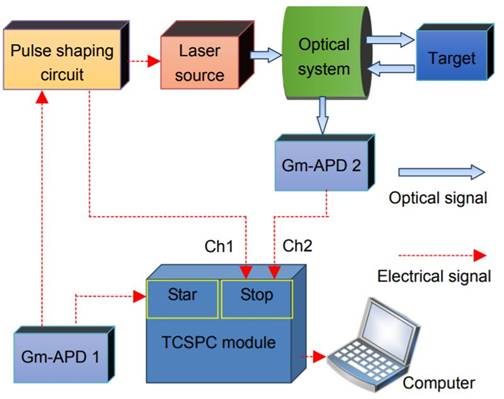A New Autonomous Lidar Solution for Large-Scale Applications
Recently, a research group led by LIU Bo from IOE has proposed a new lidar transmission pulse encoding method. The new method will be used to solve the crosstalk problem in large-scale lidar application.
Now, lidar is becoming the most core sensing device in the fields of auto driving, positioning and navigation, space mapping, and security. However, with the increase of its application scale, when multiple lidars are working at the same time in the same space area, one lidar may receive echoes from other lidars, causing data to be disordered and unable to work properly, that is crosstalk. Crosstalk is a typical technical obstacle in large-scale lidar application, and has plagued researchers for a long time. Especially in the field of autonomous driving, more than a dozen lidars will work in the same area at the same time in future road traffic. At this time, crosstalk between these lidars will bring extremely serious safety risks. Therefore, to realize the large-scale application of lidar, crosstalk is the main technical obstacle that must be solved first.
The new method proposed by LIU Bo uses single-photon detector's true random noise pulse as signal source, and generates a true random emission pulse sequence. The true random sequence is non-repeatable and constantly changing, moreover, the signals emitted by different lidars are always different. All of these characteristics bring a prominent advantage, that is, it will not be interfered by the signals of other lidars, which will fundamentally solve the problem of crosstalk and enable the large-scale application of lidar in the field of autonomous driving.
The research group led by LIU Bo is committed to the research and development of various lidar detection technologies. The team has a dozen fixed members and graduate students, they propose the polarization-modulated laser 3D imaging technology for the first time, study other related lidar technologies and the laser frequency scanning ranging technology for high-precision absolute distance measurement. They have achieved remarkable results in these research areas and undertaken a series of major national scientific research projects.
Results of the true randomly coded photon counting lidar will be published in the journal of Opto-Electronic Advances, 2020, 3(2).

Figure 1. Schematic diagram of true random coded photon counting lidar system
Contact
CAO Qiang
Institute of Optics and Electronics
Email: caoqiang@ioe.ac.cn
